Machine Learning in Ecommerce – the Future of UX and Online Shopping
The term “market” still brings the buzzing streets, the traditional shops, shouting punch lines and offers, the peculiar stench of rotten vegetables mixed with all the aromas, and much more into our mind. But things are changing now. Almost 3 billion consumers are going to be online from 2022. The internet is the new marketplace today. Thus, the notion of machine learning in eCommerce is becoming more and more widespread.

Ecommerce has changed everything. In eCommerce, the marketplace is physically non-existent, yet the whole crowd is with you virtually. Shopping was never so comfortable in human history as it is now. Ecommerce has now further evolved into well-designed and developed mobile apps. Additionally, advances in mobile app development are continually reshaping the marketplace concept. It has reshaped it so much that the modern market can be held in your hand or safely in your pockets. Yes, we are talking about mobile eCommerce here.
We are on a journey to explore what machine learning in eCommerce holds for the future shopping experience. The influence of AI in web development is growing with the latest developments in technology. However, before we jump into the mesmerizing world of Artificial Intelligence and machine learning, it is helpful to take a brief look to see what makes an eCommerce website so critical to today’s market.
What’s the defining feature of an eCommerce site? Well, with the external conditions remaining the same, the most critical aspect of an eCommerce store is the feel it delivers to a buyer who visits that site. In technical terms, we call it the UX or the User Experience. Let’s see what makes it so.
What UX Means to an Ecommerce Site
UX (User Experience) of any website is all about foreseeing a user’s expectations and behavioral patterns to make their engagement interactive and productive. An eCommerce site must focus on providing your end-users with a simple, engaging, and satisfying shopping experience. UX is one major factor in driving conversions in an eCommerce app.
At this point, it will be helpful to delineate the meaning of UI and UX. The two are often used interchangeably, which is not conceptually right. UI or User Interface concerns the look of your website in terms of the designs and their combined effect on visual aesthetics. UX or User Experience is all about getting inside your user’s head. It focuses on placing the various elements on a page where users expect to find them. UX is about the purpose, and UI defines functionality and appearance.
Now, let’s see why UX is more of a determining factor in driving conversions than UI. We will use a small survey of customers, asking them to give reasons for abandoning carts while shopping online.
Reasons for Abandoning Carts
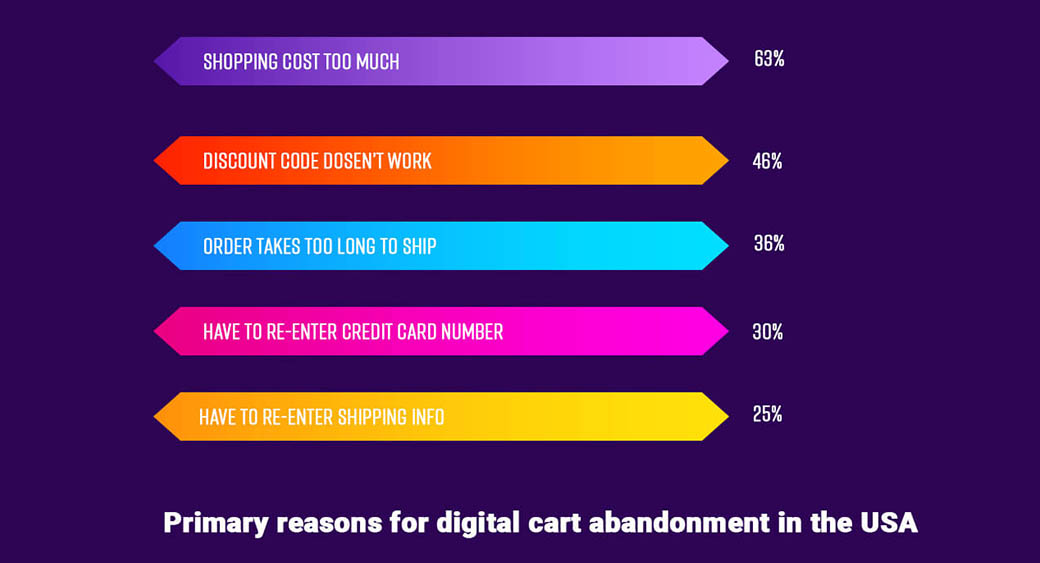
The survey outlines some specific factors that put off customers in the United States while shopping online. If you are watchful enough, these are the pearls of wisdom that can set your online store on a new path to success. Let’s look at it more closely:
A buyer gets his mobile out for two things: first, for products that are not available in his local store, but he needs it urgently. Secondly, when he needs a product of a certain quality or specific brand and that too at an offer price. In the first case, the buyer expects speed from the eCommerce platform, and in the second case, he wants it cheap as he is on a tight purse.
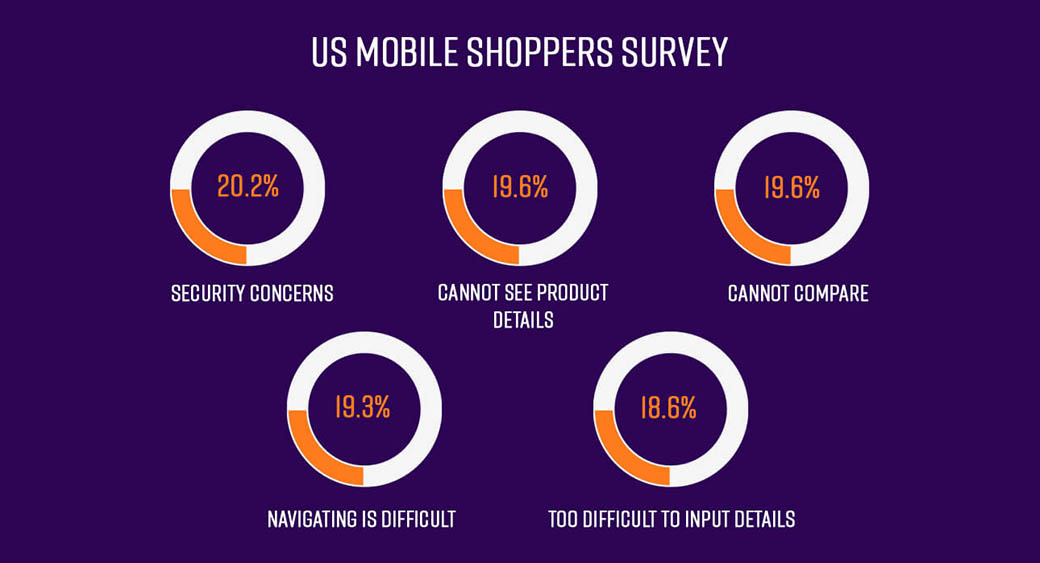
The first survey points to cost as one of the main reasons for buyers to drop a cart on the checkout page. Other causes being discount code errors, long shipping time, error popping up at the payment stage, which again is very annoying. The second survey highlights security, the improper placing of product details, inability to navigate and compare products, and finally, difficulty in entering inputs. So the buyers who have urgency, as well as budget limitations, can be disappointed with your eCommerce website.
But our concern is on the things that we can control. You cannot expedite the shipping process for a product from India to the United States. The airplane has a limitation of flying speed! Neither can you force your agents to lower product prices? So channel your energy on areas that you can improve.
Improve User Experience
If you take a second look at the above survey, you will see that there is something that you can work upon, and that is UX (User Experience). Placing product details where buyers expect them to see is a matter of intelligent UX structure. Improving navigation, simplifying inputs, providing compelling content and information, etc. are all the basics of a good UX design.
We could sum up that it is poor UX that’s causing the sales in eCommerce applications to fumble. It is just because they are not merely helping the users get to their right products. 70-85% of those abandoned carts in the retail sector were nothing but missed opportunities. They were knocks on your door, and you were not listening. But with a responsive UX, much more is possible.
Now, the question comes, what makes an engaging UX? Are there any UX design guidelines and the app store optimization checklist that will help you to blend with the latest trends in mobile app development to catch the buyer’s eye?
Machine Learning in Ecommerce – Making UX Engaging
According to the founder of Adaptive Path, Jesse James Garrett, there are five key elements of UX. He suggests that in an engaging UX design, these five elements should find synergy and comes one after the other. Let’s have a look at what the five essential components are.
- Strategy – It is the fundamental element, the root. In this stage, your business model, the customers, and the product, etc. are researched in detail.
- Scope – Here, the functions and content are determined. The functional aspects involve the product features and how these features fit well with each other. The features will cover what the User is seeking. The content part is about providing information for the product. It includes the relevant description, images, audio, video elements, etc.
- Structure – There are two sub-elements in a structure, which are interaction design and information architecture. The interaction design is about how the user interacts with the product and how the system responds to it. Information architecture is about the arrangement of the content and organization to ease human understanding.
- Skelton – It is the visual part of the design that we interact with as users. The skeleton makes a user interact with the functionality of the website. Navigation, interface elements all come under this category. Numerous UX design tools can help you to improve this important part.
- Surface – The totality of the work represents the surface. It reflects all the decisions made concerning the look of the final app or website, the layout, typography, colors, etc.
These are the things to consider while creating basic UX designs. Still, when it comes to eCommerce sites, you need to develop these fundamentals.
Customer Behavior, UX and Machine Learning in Ecommerce
A good UX finally comes down to how well you predicted the customer behavior and how sequential and intuitive was your design to take buyers through your design path with ease. However, it is easily said than done. Customer behavior analysis is one of the most challenging tasks in analytics and requires massive data collection and processing. It is here that machine learning in eCommerce comes into focus. The ability of artificial neural networks to learn the habits, preferences, feelings, likes, and dislikes of buyers can turn the tables for the software development industry.
You might be wondering how eCommerce apps, UX and Artificial Intelligence fit together. Actually, UX, eCommerce, and machine learning are in a vicious cycle of self instigated evolution. The figure below explains it more effectively.

When users come to your eCommerce store or app, they first interact with your current UX and UI designs. The way they move through the site, their clicks, their selection, the pauses and abandoning or proceeding, etc. are continually collected by the neural networks. Moreover, the machine learning capabilities then respond better when a similar user behavior begins with the experience from the past. Hence, the new user experience with insights from the first experience develops over time. The more the machine learns, the more accurate and diverse its response to user expectations will be.
Finally, consumers come online to gather data themselves. Amid all the big words like AI, machine learning in eCommerce, ANN, you must not forget that the very customers you are targeting have an intelligence of their own. And it is the power of your applications to impress this intelligence that drives a visit into conversion.
The Future of Shopping and Machine Learning in Ecommerce
Machine learning summons such a hype that one is sometimes forced to wonder about the possibility of it hitting us in real life. But, the next time you shop on amazon and find recommendations for you and are tempted to slide your finger left on and on. Know that Machine learning in eCommerce is throbbing with life. For instance, personal assistants like Siri, Alexa, predictive navigation, intelligent e-mail filtering (to avoid spam mails) are all happening now.
The future of shopping is in the making in the capable hands of AI. Let’s see how machine learning in eCommerce is going to make shopping a unique experience.
Leverage AI to Create Targeted Advertising
Artificial Intelligence and machine learning are revolutionizing digital advertising for small ecommerce stores. This is because the strengths of AI align perfectly with what it takes to create and optimize a successful paid ad campaign.
Ecommerce store owners, even with no prior advertising experience, are able to leverage AI to generate ad images and ad copy on demand. The AI-generated ads automatically apply advertising best practices to create ads with a high chance of interaction and positive return.
Then, after the ad campaign goes live, AI does what no human can — it constantly monitors the stream of performance data for the ad and instantly makes micro-adjustments in real time to improve ROAS.
Ecommerce marketing tools like Tailwind have created AI-driven paid ads solutions for ecommerce stores. These paid ad solutions make it easy for anyone to get started with paid ads and, with the help of AI, successfully scale their store with targeted traffic.
Use Virtual Sales Agent
Yeah, the term is quite a cliché, it is understandable. But, before you scroll away, think about what is it that makes a physical store though inconvenient do better conversions per visit than an online one?
You enter a dry fruits store, just because it looked so good with all the lighting colors. And you meet the sales guy, he follows you around at a safe distance and whenever your foot pauses in front of a blackberry dry fruit jar. He offers you a trial. You chew on the dry fruit and he puts the line in: “blackberries are so good for immunity you know, lots of doctors buy from us.”
And you roam around the shop and with him accompanying, you make a 50$ plus purchase. He warmly takes over your basket, processes it with a smile, and casual chats, and you walk out feeling happy and convinced that it was indeed worth every penny.
What just happened? If you leave out the question of the worthiness, did you see what an engaging company can make you do? How they influence your opinion subtly and persuasively?
Now, imagine you enter a traditional eCommerce site. You are on your own, and you pass through those screenshots of dry fruits without anybody offering you some bonus points. The result is that you close the site and find something better to do. Or you make a purchase worth a few dollars at the maximum.
So, there’s a gaping difference between an engaging website and a passive one. A salesperson is an effecting agent in a physical shop, and a virtual agent will be the one prominent feature that is going to make machine learning in eCommerce successful.
Virtual Assistant – Example of Machine Learning in Ecommerce

For instance, check out this fantastic virtual agent from eBay, which it calls ShopBot. An assistant like ShopBot, helps you find the right product from the eBay’s one billion-plus listings.
With ShopBot, your shopping experience is pure luxury. All you have to do is click open eBay and tell the agent what you are looking for, and ShopBot will handle the rest for you. It will ask specific questions to optimize and fine-tune the search to give the buyer the most relevant information.
However, remember that a virtual agent is something that can provide at least one service to the user queries, while chatbots need not do so.
Offer Product Recommendations

Online shoppers often have this feeling when the websites they visit are full of the things they have recently brought. Well, it is not sheer coincidence. There is a brilliant machine learning system working behind it. In fact, the algorithms a few years back were done manually to match users. Then, it was often erroneous and took much time to implement.
However, the modern recommenders follow either a collaborative algorithm or content-based filtering algorithm. Collaborative filtering works by studying users having a similar taste for particular items and then it creates a list of items by combining the ratings given by the users.
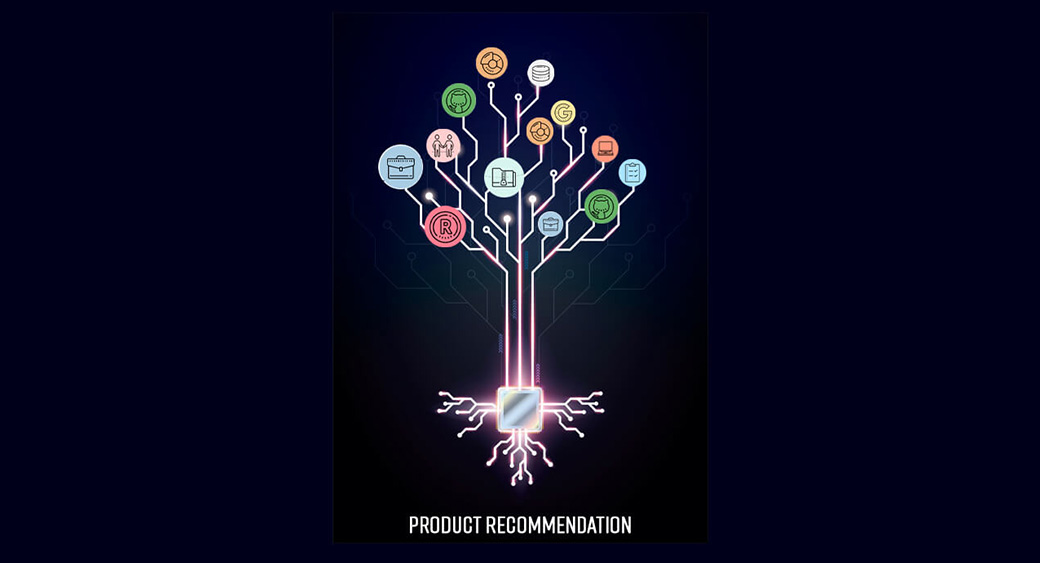
Content-based filtering, on the other hand, takes the content of a particular product and tries to match for content from the user profile. It seeks to link the contents through permutations and combinations to establish a specific correlation. So, to implement this, UX designs need to price out essential information from clients.
Moreover, there is every possibility that this feature can revolutionize machine learning in eCommerce to new proportions.
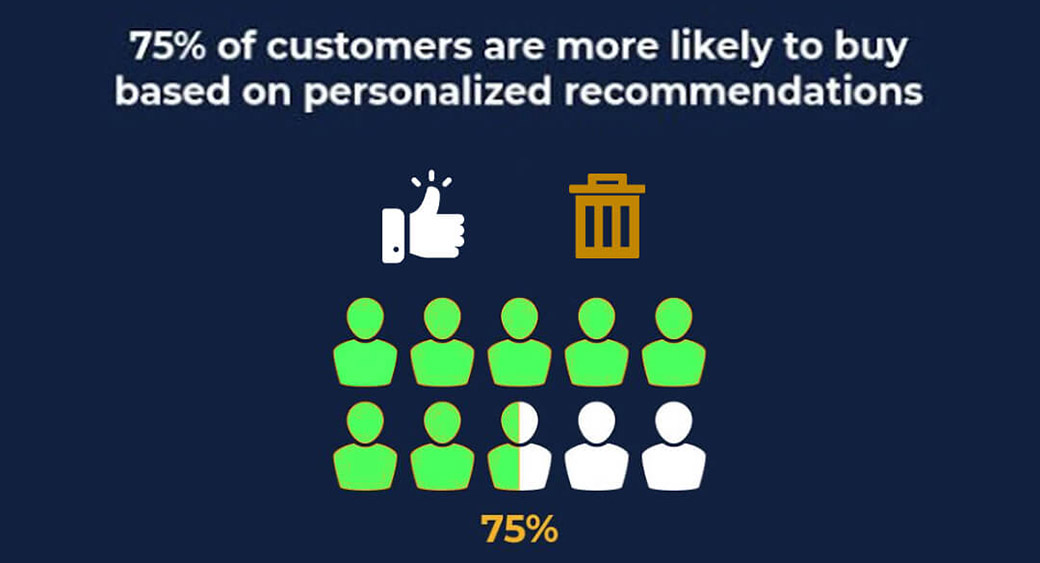
Because according to the mobile apps rating agency Clutch. com almost 75% of the consumers are likely to buy products that come up on their personalized recommendations. The underlying psychology behind this is that a personalization engages buyers very closely. It is just like visiting your friendly neighbor’s grocery store. You find everything where you expected, and as a user, you indeed feel great.
Make Search Results Precise and Cohesive with Machine Learning in Ecommerce
Search engines are on a quest to make the internet as user-friendly as possible. The recent Google Bert update is an indication of this simplifying trend. The Bert update tends to align search engines to respond closer to the natural language, as people love using voice search. So, there is a clear focus on serving the searching user’s expectations rather than on complying with the standards of English literature. It is now more about understanding the search intent and providing the User the most relevant search results.
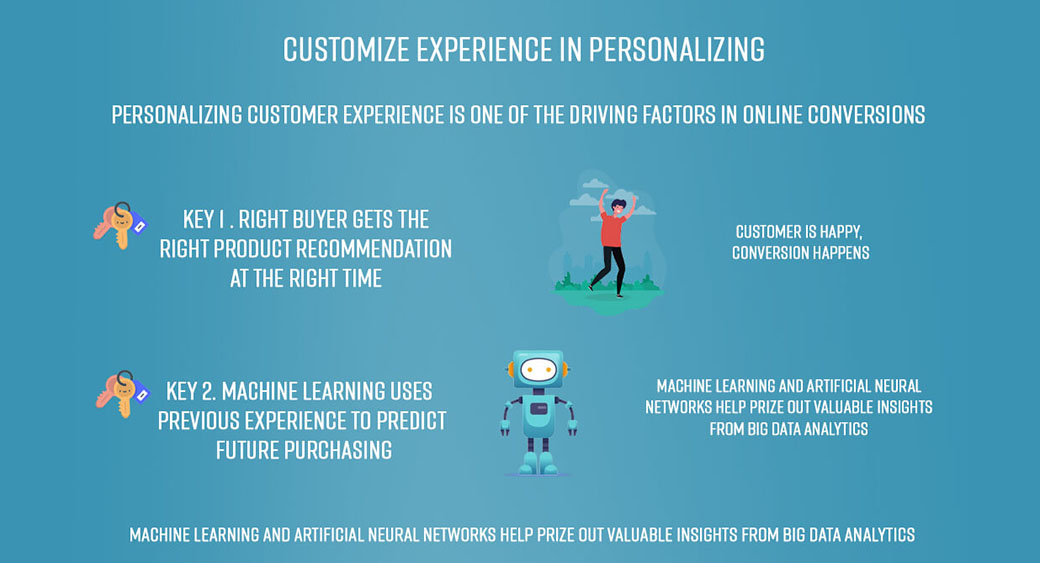
Machine learning is on its way to making searching on Ecommerce websites like Amazon and eBay very comfortable for buyers. How a product search relates to your customer’s need is critical in turning searches into conversions. If you search for “Laatukoru wedding rings” on Amazon, you will get search results that are apt for Laatukoru necklaces. On the other hand, if someone searches for something unusual, like “Laatukoru marriage rings,” then it showcases stainless steel and related rings.
With machine learning, such absurd result scenarios will not appear. The ability of machine learning algorithms to make use of your site and metrics will see search results based on the click-rate priority, purchase rates, reviews after-sale, etc. Consequently, it means products with high customer ranking, availability of products, etc. tops the list.
Apply Intelligent Chatbots
Websites are now becoming conversational. And when we say “conversational,” it is the real deal here. Chatbots are no longer old-school programmed chats that respond mechanically to your queries. The new chatbots are intelligent, and machine learning gives life to these bots.
Every time you purchase in an eCommerce store, it comes alive and asks you questions. It keeps asking you questions to develop definite correlations. Training chatbots in natural language with the capacity to converse about different products will be the next trend in eCommerce. To be precise, big companies like Google, Microsoft, and other tech giants are all keen to make the Internet capable of simple and casual conversions. This is a positive development in a world where English grammar impedes people from diverse cultures to use the internet entirely.
A conversation with a chatbot using machine learning in eCommerce in the future may look like this :
Bot: Hey, again, looking for those pink summer caps?
You: Nope, I was passing by . . .
Bot: Jill’s just posted an Insta story, and it looks like he is packing for trekking.
You: hmmm . . .you are smart !!!
Bot: Thank you, its nothing, I also happen to know that you are looking for trekking shoes and that too red ones …
You: Whoa…no way…this is epic. You are right.
Interactive Chatbot – Example of Machine Learning in Ecommerce
There are already many chatbots that are leveraging AI to give users the best feel in terms of UX and exquisite shopping experience.

SnapTravel uses an interactive chatbot that collects the details about your trip. It collections information about your journey through conversations. And by the end of the talks, it will be giving you all the names of hotels, inns, and restaurants that fall on your journey route. Travelers are going to love this app because the messiest thing on trips is making plans. Once you make two or three conversations with the Snap Travel boat, you are most likely to hit on a blueprint that fits you in mind.
Smart Push-Notifications
Its well knew that push notifications are an essential feature of any eCommerce app. You might already be getting one from Amazon’s latest winter sale offers. But smart push goes beyond that.
Smart push-notifications is about learning user behavior, habits, and parsing social media contents and user plans. Clari is an excellent real-life example of what is in store for eCommerce.

Clari can forecast sales by employing AI to predict where your purchases will be by the end of this quarter. Mainly, smart-push notifications will involve analyzing the stock of goods, their expiry date, and planning the sales with festivals, seasonal habits, and general tendencies of consumers. For example, if you are planning to visit your parents this winter, just like the last one, then smart push will notify you when there are offers on blankets. (It remembers from your recent chatbot conversation that you are looking for new quilts and combined with your yearly schedule the offer finds you at the right time.)
Visual Search as Machine Learning in Ecommerce
It often happens that you have seen a classic watch in one of those board conferences. But there is no way you could ask. The story doesn’t end there.
In a world where machine learning in eCommerce is transforming the look and feel of websites, the story never ends. You dig on the group photo session and zoom the watch and just put it into the virtual search bar. And, within seconds, all the possible brands who made such watches are available to you, just a click away.
The visual search may seem Utopian to you, but then you are here for a shock.
IKEA which works on GrokStyle’s visual search is a perfect example. The point-and-search functionality is the highlight here.

The feature is available in their iOS application and is a declaration of what we can expect in the future. All you have to do is scan a picture with your favorite furniture and upload it into the app. You can also add photos from the gallery and search. And it fetches you all the similar products.
Ux and Machine Learning in Ecommerce – Concluding
The progress we are making with AI, machine learning, and other associated technologies is a clear indication of the prospective future of shopping. An eCommerce store on mobile or web, if willing to adopt a personalized UX will have a sure success, in comparison to flowery designs with weak user intent in mind. Machine learning is here to aid designers in developing better user-perception through chatbot feedbacks and user-behavior analytics. The future of shaping is indeed in the making, and we can expect many wonders in the coming days.




Leave a Reply